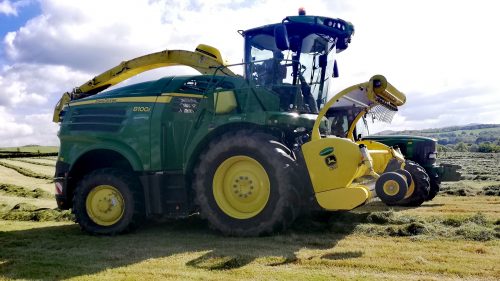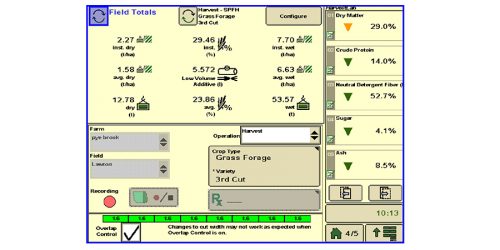Measure to manage – the first step to high-yielding quality grass
4 December 2020 Industry News

ADAS’ Grass Yield Enhancement Network (Grass YEN) aims to increase yields of high quality forage through supporting farm innovators and developing platforms for industry/science interactions.
Grass YEN has been running for three seasons, from 2018 to 2020, involving over 25 UK farmers. It has demonstrated that the UK has an ideal environment for achieving very high grass yields of more than 20 to 25 tonnes of dry matter per hectare each season.
However, UK growers generally achieve less than half of this potential and few accurately measure yields on a regular basis, particularly of conserved grass. This has resulted in a lack of information with which to quantify and benchmark the productivity of grass growing systems and, just as importantly, to determine which production methods are most effective. The adage ‘you can’t manage what you don’t measure’ is very apt here.
To help farmers identify the most accurate and time efficient way of measuring grass, ADAS has been testing five methods including: counting and weighing silage trailers on a weighbridge; a John Deere HarvestLab equipped self-propelled forage harvester; manually weighing lengths of cut swath; weighing multiple 1m2 quadrats; and a Haldrup small plot forage harvester.
In 2019, the tests were carried out on first and second cut silage in three fields totalling just over 13ha on the Rothamsted Research Farm at North Wyke, Okehampton in Devon. This year, they were carried out on second and third cut silage in three fields totalling just over 39ha at Wigley near Ludlow in Shropshire, farmed by R Gough & Son.
Timewise the most efficient method was the John Deere forage harvester which, after initial calibration, provided instantaneous measurements of yield and dry matter content. In 2019 a 8100i model was used, and this year a 9600i.
Counting and weighing trailers took a bit more time and organisation, and it is recognised that not all farmers have access to a weighbridge. Weighing 3m lengths of cut swath in five parts of a field took two people about 1¼ hours per field, while cutting grass from 15 quadrats took 3¼ hours per field. The quadrat approach was also the least accurate, because such a small proportion of the field is actually measured.
In 2019, the fresh yield measurements from the John Deere forage harvester and the weighbridge method were very similar. Manually weighing lengths of swath and the small plot harvester gave higher fresh yields, possibly due to taking the measurements in higher yielding parts of the field as a result of chance selection.
In 2020, the measurements have placed a greater focus on testing grass quality. Samples from the fields were sent to a commercial lab for fresh grass near-infrared spectroscopy (NIRS) analysis of dry matter content, crude protein (CP) and metabolisable energy (ME). Dry matter content was also measured by ADAS directly by oven drying each sample.
The John Deere HarvestLab dry matter sensor fitted to the forage harvester’s grass chute also uses NIRS to determine the same constituents, taking 4000 measurements per second at the point of harvest to accurately measure both grass yield and quality. In total over 200 grass samples were tested. The results showed that HarvestLab gives very good accuracy of dry matter content for grass harvested at typical dry matters for clamping.
“The key value of the HarvestLab sensor to contractors is that they know the wet weight yield of the grass as it comes off the field,” says John Deere Limited harvesting territory sales manager Rob Hill. “Proving the correlation between wet yield and the system’s ability to monitor that constantly and consistently means that contractors can charge customers for accurate tonnages going into the clamp.

“Dairy farmers will also benefit from the ability to benchmark their production in the Grass YEN programme using these measurable results. In Deere’s view the ADAS trials are making a very strong case for the use of HarvestLab yield monitoring to produce accurate wet and dry yield estimates for commercial use. There’s no doubt that HarvestLab technology can improve grassland performance and add value to both the contractor’s and the dairy farmer’s business.”
ADAS Head of Crop Physiology Dr Pete Berry adds: “The Cereals YEN programme is making good progress in understanding what management and environmental factors are important for achieving high yields. To make similar progress with forage crops, we need accurate methods of measuring yield automatically that don’t require too much extra legwork. Forage harvesters with yield mapping technology can provide this.”
For more details contact your local Ben Burgess Precision Ag specialist

